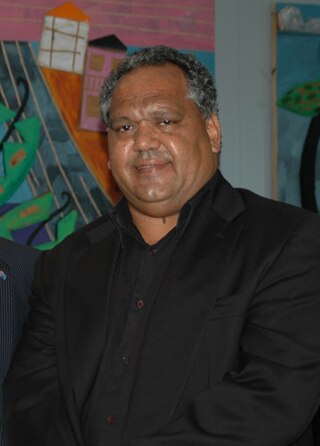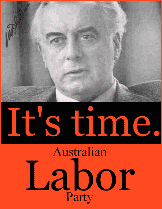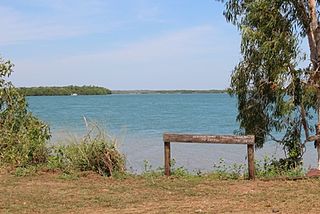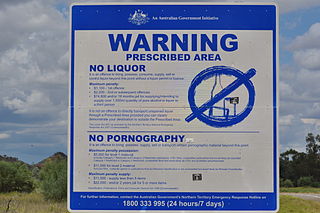
Welfare, or commonly social welfare, is a type of government support intended to ensure that members of a society can meet basic human needs such as food and shelter. Social security may either be synonymous with welfare, or refer specifically to social insurance programs which provide support only to those who have previously contributed, as opposed to social assistance programs which provide support on the basis of need alone. The International Labour Organization defines social security as covering support for those in old age, support for the maintenance of children, medical treatment, parental and sick leave, unemployment and disability benefits, and support for sufferers of occupational injury.
Welfare reform is the process of proposing and adopting changes to a welfare system in order to improve the efficiency and administration of government assistance programs with the goal of enhancing equity and fairness for both welfare recipients and taxpayers. Reform programs have various aims: empowering individuals to help them become self-sufficient, ensuring the sustainability and solvency of various welfare programs, and/or promoting equitable distribution of resources. Welfare reform is constantly debated because of the varying opinions on a government's need to balance the imperatives of guaranteeing welfare benefits and promoting self-sufficiency.
Workfare is a governmental plan under which welfare recipients are required to accept public-service jobs or to participate in job training. Many countries around the world have adopted workfare to reduce poverty among able-bodied adults; however, their approaches to execution vary. The United States and United Kingdom are two countries utilizing workfare, albeit with different backgrounds.

Patrick Joseph McClure, AO advises governments on welfare reform, social policy, charity regulation and impact investment. He is a company director and a former chief executive officer of Mission Australia and the Society of Saint Vincent de Paul (NSW/ACT).

The Shire of Aurukun is a local government area in Far North Queensland, Australia. The shire covers part of western Cape York Peninsula, the most northerly section of the Australian mainland.

Noel Pearson is an Australian lawyer and founder of the Cape York Partnership, an organisation promoting the economic and social development of Cape York. He is also the Founder of Good to Great Schools Australia an organisation dedicated to lifting education outcomes for all Australian students.

It's Time was a successful political campaign run by the Australian Labor Party (ALP) under Gough Whitlam during the 1972 federal election in Australia. Campaigning on the perceived need for change after 23 years of conservative government, Labor put forward a raft of major policy proposals, accompanied by a television advertising campaign of prominent celebrities singing a jingle entitled It's Time. It was ultimately successful, as Labor picked up eight seats and won a majority. This was the first time Labor had been in government since it lost the 1949 federal election to the Liberal Party.

Aurukun is a town and coastal locality in the Shire of Aurukun and the Shire of Cook in Far North Queensland, Australia. It is an Indigenous community. In the 2016 census, the locality of Aurukun had a population of 1,269 people.
The Department of Families, Community Services and Indigenous Affairs was an Australian government department that existed between January 2006 and December 2007. The department which preceded the Department of Families, Community Services and Indigenous Affairs was the Department of Family and Community Services (1998–2006).

Marcia Lynne Langton is an Aboriginal Australian writer and academic. As of 2022 she is the Redmond Barry Distinguished Professor at the Melbourne School of Population and Global Health, University of Melbourne. Langton is known for her activism in the Indigenous rights arena.

Brian Leslie HoweAO is a retired Australian politician and Uniting Church minister. He served as the eighth deputy prime minister of Australia and the deputy leader of the Labor Party from 1991 to 1995, under Bob Hawke and Paul Keating. He was a government minister continuously from 1983 to 1996, and a member of the House of Representatives from 1977 to 1996, representing the Division of Batman in Victoria.

The Northern Territory National Emergency Response, also known as "The Intervention" or the Northern Territory Intervention, and sometimes the abbreviation "NTER" was a package of measures enforced by legislation affecting Indigenous Australians in the Northern Territory (NT) of Australia, which lasted from 2007 until 2012. The measures included restrictions on the consumption of alcohol and pornography, changes to welfare payments, and changes to the delivery and management of education, employment and health services in the Territory.
Social welfare in China has undergone various changes throughout history. The Ministry of Human Resources and Social Security is responsible for the social welfare system.

Roger Llewellyn Dunmore Cribb was an Australian archaeologist and anthropologist who specialised in documenting and modelling spatial patterns and social organisation of nomadic peoples. He is noted for conducting early fieldwork amongst the nomadic pastoralists of Anatolia, Turkey; writing a book on the archaeology of these nomads; pioneering Australian archaeology and anthropologies' use of geographical information systems, plus genealogical software; and conducting later fieldwork documenting the cultural landscapes of the Aboriginal peoples of Cape York Peninsula.

The Hawke government was the federal executive government of Australia led by Prime Minister Bob Hawke of the Australian Labor Party (ALP) from 1983 to 1991. The government followed the Liberal-National Coalition Fraser government and was succeeded by another Labor administration, the Keating government, led by Paul Keating after an internal party leadership challenge in 1991. Keating was Treasurer through much of Hawke's term as prime minister and the period is sometimes termed the Hawke-Keating government.

Mick Miller was a notable Aboriginal Australian activist, politician, and statesman who campaigned for most of his life seeking greater social justice, land rights, and improved life opportunities for Aboriginal Australians in North Queensland and the rest of Australia.
The Department of Social Security was a government department in Australia, which administered the Social Security system between 1972 and 1998. The department was one of several new departments established by the Whitlam government and was managed by the Minister for Social Security.
The Stronger Futures policy is a multifaceted social policy of the Australian government concerning the Aboriginal population of the Northern Territory. It is underpinned by the Stronger Futures in the Northern Territory Act 2012, which ceases to have effect 10 years after its commencement on 29 June 2012.

The Aboriginal Shire of Hope Vale is a local government area in Far North Queensland, Queensland, Australia, north of the town of Cooktown. The majority of the Shire consists of Deed of Grant land that is held for the benefit of Aboriginal people particularly concerned with the land and their ancestors and descendants.
The Cashless Welfare Card, also known as the Indue Card, Healthy Welfare Card or Cashless Debit Card, is an Australian debit card, trialled by the Australian Government from 2016 onwards, which quarantines income for people on certain income support payments to "encourage socially responsible behaviour" by not allowing the owner to purchase alcohol, gamble or withdraw cash. The cards are attached to a separate account managed by Indue into which 80% of the income support payment is paid. In addition, the cashless welfare card only allows users of the card to buy products at approved sellers, that support electronic Mastercard or Visa payments. It cannot stop users from buying restricted goods at shops that sell both restricted and approved goods, such as supermarkets that sell alcohol. Bill payments are set up by Centrelink to automatically be paid by the card. An earlier income management card, the BasicsCard, was trialled in the Northern Territory.
















